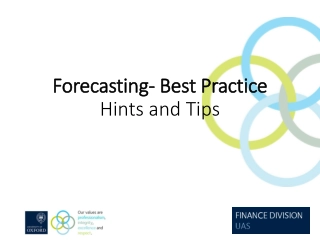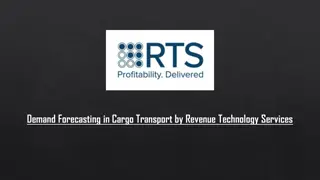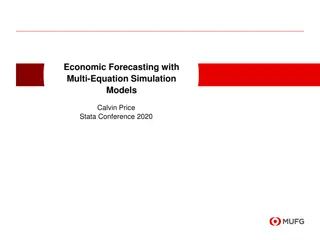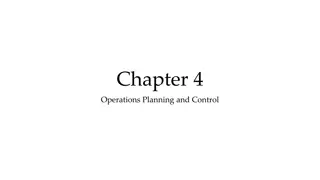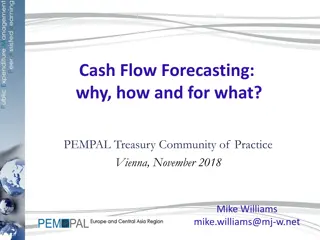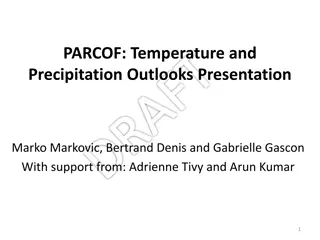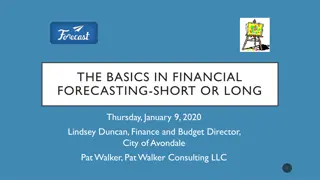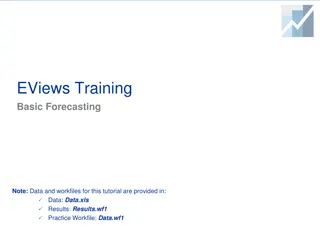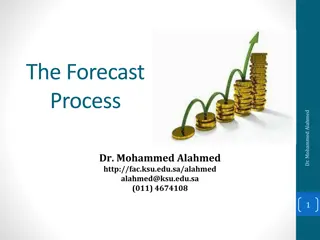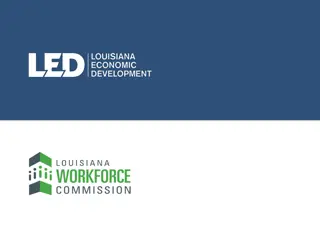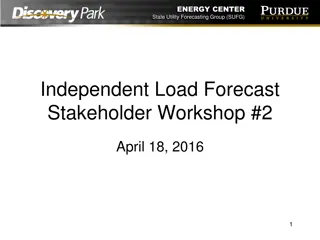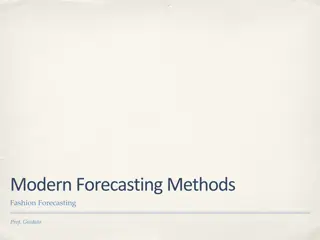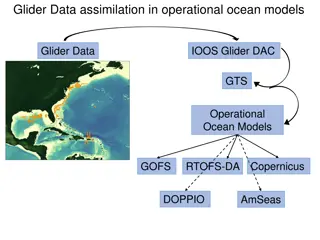Understanding the Importance of Business Forecasting
Business forecasting involves predicting future trends based on past and present data to make informed decisions and allocate resources strategically. By utilizing quantitative and qualitative forecasting methods, organizations can adapt their business strategies, maximize resources, and stay competitive in dynamic markets. Investing in good business forecasting provides valuable insights for planning projects, activities, and costs, ultimately securing the business's future.
Download Presentation

Please find below an Image/Link to download the presentation.
The content on the website is provided AS IS for your information and personal use only. It may not be sold, licensed, or shared on other websites without obtaining consent from the author. Download presentation by click this link. If you encounter any issues during the download, it is possible that the publisher has removed the file from their server.
E N D
Presentation Transcript
Business forecasting projects the future development of a business or industry by using trends and patterns from past and present data. As a result of this business practice, you can strategically determine the allocation of resources and plan for projects, activities, and costs. Organisation can manage their resources, align their goals with current trends, and stay competitive by forecasting.
You can secure your business's future by using relevant data from the past and present to develop better strategies and project plans. Investing in good business forecasting gives organization unique insights into likely future events, enables them to maximise their resources, sets product teams and establishes their market leadership. Making data-driven, logical decisions rather than decisions based on emotions or gut feelings is a requirement for managers.
Importance of Business Forecasting It is not always the same market in which a business operates, and businesses that prepare for situations well will perform better than their competitors. By forecasting future trends, companies can change and adapt their business strategies according to the directions. Businesses need quantitative, qualitative, statistical, and econometric models to obtain accurate projections and estimates. Managers can strategise more confidently using business forecasting tools that provide data-backed results. For forecasting to be effective, you must consider the company's data and industry factors. In business strategy and decision-making, business forecasting brings logic and data together.
Methods of Business Forecasting There are several methods for forecasting business activity. In general, they fall into two categories: Quantitative forecasting Qualitative forecasting Businesses need quantitative and qualitative forecasting techniques in different product life cycle stages. There is a loss of connection between past and future trends when a company's focus changes, its competitors or strategy changes, or its compliance requirements change. Therefore, it is even more essential to choose the proper forecasting method.
1. Quantitative Business Forecasting To predict future events in your business or industry, use quantitative forecasting when there is accurate past data available. By analysing existing data, quantitative forecasting determines more probable outcomes. Different variables are connected and analysed to establish cause-and-effect relationships between events, elements, and results. In quantitative forecasting, past sales data is an example. Quantitative models use numbers, formulas, and data. Quantitative analysis involves little human intervention.
Business forecasting quantitative models include: i. Indicator Approach: This approach relies on the relationship between specific indicators remaining stable over time, e.g., GDP and unemployment rates. Forecasters can estimate the performance of a business by examining the relationship between these two factors. ii. Average Approach: By using the average approach method, future values are predicted based on the average of past values. It is best to use this approach when assuming the future will be like the past. iii. Econometric Model Approach: Using econometric models for forecasting is mathematically rigorous. Generally, forecasters assume that the relationship between indicators will remain the same and check the consistency and strength of the relationship between datasets. iv. Time Series Approach: Predicting future outcomes using historical data is known as the time- series method. Forecasters expect to be able to predict the future by looking at what has happened in the past.
2. Qualitative Business Forecasting In qualitative business forecasting, experts and customers make predictions and projections. The method works best when there is not enough past data to analyse to make a quantitative forecast. By combining available data, industry experts and forecasters can make qualitative predictions. Short-term projections are the most successful for qualitative models. The discussions are expert-driven, presenting contrasting opinions and relying on judgment over calculable data.
Business forecasting qualitative models include: i. Market Research Method: Market research involves polling professionals, customers, and preferences and opinions. ii.Delphi Method: Delphi involves soliciting opinions and recommendations from a panel of experts and compiling them. employees to find their


